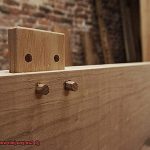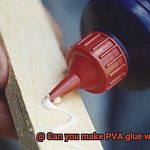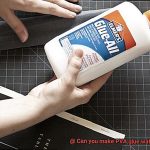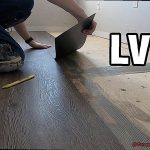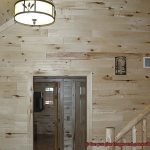Have you ever found yourself in a sticky situation, trying to join brass and aluminum? Well, fret no more. We have the ultimate solution for you – JB Weld. This incredible adhesive is here to save the day and create an unbreakable bond between these two seemingly incompatible metals. In this blog post, we’ll delve into the secrets of using JB Weld to bring brass and aluminum together, giving your projects that professional touch they deserve.
Step-by-Step Process:
Using JB Weld to unite brass and aluminum may sound like a daunting task, but fear not. It’s actually quite simple. First things first, make sure those surfaces are squeaky clean. No grease or dirt allowed. If you want some extra grip, a light sanding with fine-grit sandpaper will do the trick.
Now it’s time to mix up some magic. Grab equal parts of JB Weld’s resin and hardener components and follow the instructions carefully. Give it a good stir until you achieve a smooth and consistent mixture. Oh, here’s a little tip – if you warm up the components just a tad, it’ll speed up the curing process, making your bond even stronger.
With your mixed concoction ready, apply it generously onto both prepared surfaces. Make sure to cover the area where you want the magic to happen. Now press those materials together firmly, ensuring a snug fit. To keep everything in place while it cures, grab some clamps or masking tape – whatever floats your boat. Let it sit undisturbed for the recommended curing time specified on that trusty JB Weld package. And voila. Your brass and aluminum are now fused together in perfect harmony.
Challenges and Benefits:
Of course, every adventure comes with its fair share of challenges. When working with JB Weld on brass and aluminum joints, surface preparation is key. Don’t skimp on that sanding and cleaning – they’re the foundation of a strong bond. Additionally, keep in mind that brass and aluminum have different coefficients of thermal expansion. This means that as temperatures fluctuate, your joined parts might experience slight variations. But fear not, with proper surface prep and a watchful eye, these challenges can be easily overcome.
Now, let’s talk about the perks of using JB Weld for this bonding venture. First off, JB Weld is a versatile adhesive that works wonders on various metals – brass and aluminum included. Say goodbye to stocking multiple
What is JB Weld?
Contents
- 1 What is JB Weld?
- 2 Factors to Consider When Bonding Brass and Aluminum
- 3 Challenges in Bonding Brass and Aluminum Together
- 4 How Does JB Weld Work?
- 5 Instructions for Using JB Weld on Brass and Aluminum
- 6 Curing the JB Weld
- 6.1 Curing the JB Weld: The Ultimate Guide to Bonding Brass to Aluminum
- 6.2 Step 1: Prepare the Mixture
- 6.3 Step 2: Clean and Dry
- 6.4 Step 3: Apply with Precision
- 6.5 Step 4: Press Firmly
- 6.6 Step 5: Secure in Place
- 6.7 Step 6: Patience is a Virtue
- 6.8 Step 7: No Disturbance Zone
- 6.9 Step 8: Unleash the Power
- 7 The Strength of the Bond
- 8 Other Options for Bonding Brass and Aluminum
- 9 Conclusion
When it comes to DIY projects, having a reliable adhesive in your toolbox is crucial. Enter JB Weld, the go-to epoxy adhesive trusted by professionals and enthusiasts alike. With its exceptional bonding properties, JB Weld has become a versatile and indispensable tool for various applications.
In this blog post, we will explore the strength, versatility, durability, and application tips of JB Weld, giving you a comprehensive understanding of why it’s the adhesive of choice for countless DIY projects.
Unparalleled Bonding Properties:
JB Weld is renowned for its ability to create strong and durable bonds. This two-part epoxy formula consists of a resin and a hardener that, when combined, undergo a chemical reaction resulting in an unbreakable bond. Whether you’re repairing cracks in metal, plastic, wood, or ceramics or joining different materials together, JB Weld provides a reliable solution that stands the test of time.
Unmatched Versatility:
One of the standout features of JB Weld is its versatility. It works on a wide range of surfaces and materials, including brass and aluminum, making it perfect for any DIY project. From fixing engine parts to crafting custom jewelry, the possibilities are endless with JB Weld. Just remember to follow the manufacturer’s instructions and ensure that the surfaces being bonded are clean and free from contaminants for optimal results.
Extreme Durability:
Once cured, JB Weld creates a bond that is resistant to water, oil, and most chemicals. Its ability to withstand vibrations and impacts makes it ideal for applications that require strength and durability. Whether you’re repairing a leaky pipe or reinforcing a broken tool handle, JB Weld will hold up under pressure and provide a long-lasting solution.
Application Tips for Success:
To achieve the best results with JB Weld, proper surface preparation is key. Ensure that the surfaces are thoroughly cleaned and free from rust, grease, or dirt. Apply the adhesive evenly to both surfaces and press them firmly together.
Allow the adhesive to cure for the recommended amount of time, considering factors such as temperature and humidity. Following these tips will ensure a strong and reliable bond every time.
Factors to Consider When Bonding Brass and Aluminum
If you’ve ever wondered how to bond brass and aluminum, fear not. We’re here to guide you through the factors to consider when tackling this adhesive challenge.
From metal compatibility to thermal expansion, we’ve got you covered with all the essential tips and tricks.
Metal Compatibility:
Brass and aluminum may seem like an odd couple, but they can create a powerful bond when properly handled. Understanding the compatibility between these metals is crucial before embarking on any bonding journey.
Surface Preparation:
Proper surface preparation is key to a successful bond. Thoroughly clean both brass and aluminum surfaces to remove dirt, grease, or oxidation that could hinder the bonding process. Sanding or wire brushing can create a rough surface for better mechanical interlocking.
Adhesive Selection:
Choosing the right adhesive is like finding the perfect partner for your metal bond project. Consider epoxy, cyanoacrylate, or polyurethane-based adhesives, each with its own strengths. Select an adhesive specifically designed for bonding dissimilar metals like brass and aluminum.
Thermal Expansion:
Beware of temperature’s impact on your bond. Brass and aluminum have different coefficients of thermal expansion. To avoid potential failure due to stress within the bond line, opt for an adhesive that can accommodate these differences.
Mechanical Fastening:
Sometimes two is better than one. Use mechanical fasteners alongside adhesive bonding for added strength and stability. Screws, rivets, or other fasteners can help hold brass and aluminum parts together during the curing process, reducing stress on the bond line.
Testing and Evaluation:
Before trusting your bond, put it through its paces. Perform shear or tensile strength tests to evaluate the bond’s performance under different conditions.
Regular inspections and maintenance are essential to monitor the bond’s integrity over time.
Challenges in Bonding Brass and Aluminum Together
If you’re searching for the perfect adhesive to create a powerful bond between these two metals, then this article is for you. Join us as we explore the challenges involved in this unique dance and provide practical solutions to create a lasting connection.
Challenge 1: Difference in Melting Points
In the world of metal bonding, finding an adhesive that can withstand the heat is crucial. Brass, with its fiery temperament, has a lower melting point compared to the cool and collected aluminum. This stark contrast makes it challenging to find an adhesive that can effectively bring them together without compromising their individual integrity.
With extensive research, you can discover adhesives or welding methods that can overcome this hurdle and create a strong bond that withstands the heat.
Challenge 2: Dissimilar Metal Corrosion
When brass and aluminum lock arms, their dissimilar properties can lead to a corrosive tango. Galvanic corrosion takes center stage as these two metals come into contact, especially in the presence of moisture or electrolytes.
In this dance of destruction, one metal takes on the role of the anode, sacrificing itself for the other. Over time, this corrosion weakens the bond and leads to failure. To combat this villainous foe, consider using an adhesive with excellent corrosion resistance properties or adding a protective barrier layer between the two metals.
Challenge 3: Difference in Thermal Expansion
Imagine dancing with a partner who moves at a different pace than you. That’s exactly what happens when brass and aluminum, with their different rates of thermal expansion, take to the floor together.
This mismatched rhythm creates stress points that may cause separation or cracking when subjected to temperature variations.
To ensure harmony in this dynamic duo, choose an adhesive that can gracefully accommodate the varying expansion rates of both metals, allowing them to move together in perfect sync.
Challenge 4: Surface Preparation
Just like preparing for a captivating dance performance, proper surface preparation is essential for a successful bond. Both brass and aluminum come adorned with oxide layers, acting as stubborn barriers to effective bonding. To ensure a smooth and flawless connection, make sure to clean and treat the surfaces before applying any adhesive.
Sanding or using chemical treatments can strip away these oxide layers and pave the way for a strong and enduring bond.
Challenge 5: Selection of Suitable Adhesive
Choosing the right adhesive is like finding the perfect dance partner – it requires compatibility and strength. However, finding an adhesive that can lead this intricate dance between brass and aluminum can be quite the challenge.
Each metal has its unique preferences, making it difficult to find an adhesive that suits them both.
Temperature resistance and corrosion resistance are just some factors to consider when selecting an adhesive. Seek guidance from experts or professionals who can guide your steps on this enchanting dance floor.
How Does JB Weld Work?
In the realm of adhesive miracles, there exists a legendary product known as JB Weld. It possesses an otherworldly power that can conquer the seemingly impossible task of bonding brass and aluminum. How does this alchemical marvel work? Fear not, for we shall delve into the depths of its secrets and reveal the science behind JB Weld’s extraordinary abilities.
The Chemistry Behind JB Weld:
At the heart of JB Weld lies a two-part epoxy adhesive that defies the laws of ordinary glues. This extraordinary concoction consists of two components – resin and hardener – that, when combined, initiate a mesmerizing chemical reaction. This reaction, known as polymerization, transforms the liquid mixture into an unyielding solid, creating an unbreakable bond.
Preparing for the Dance:
Before the mystical union between brass and aluminum can occur, meticulous preparation is essential. Cleansing these surfaces of any impurities becomes an imperative ritual. With the aid of potent solvents like acetone or denatured alcohol, every trace of dirt or grease must be banished. But that is not all. To enhance adhesion, roughening the surfaces with sandpaper or steel wool provides a gripping terrain for JB Weld to work its magic.
The Perfect Application:
Now comes the moment of truth – the application of JB Weld with precision and grace. To unleash its full potential, a thin and even layer of epoxy must grace both the brass and aluminum surfaces. This uniform application ensures maximum contact area between the materials, amplifying the strength of the bond.
The Bonding Ritual:
With bated breath, bring forth the brass and aluminum, pressing them together with unyielding force. In this intimate embrace, JB Weld weaves its enchantment, seeping into every crevice and crease between the two surfaces. To seal this bond for eternity, clamping or holding the pieces together during the overnight curing process is highly recommended. Patience becomes the key to unlocking the true potential of JB Weld.
The Grand Finale:
Now, step back and witness JB Weld’s miraculous performance. The final act of this alchemical masterpiece unfolds with time as the protagonist. Depending on temperature and humidity, JB Weld may require a period to fully cure and achieve its maximum strength. Adhering to the manufacturer’s instructions regarding the recommended curing time ensures that the bond attains its unbreakable might.
Instructions for Using JB Weld on Brass and Aluminum
If you’re looking for a reliable solution to bond brass and aluminum, look no further than JB Weld. In this comprehensive guide, we will walk you through the step-by-step process of using JB Weld to achieve a strong and durable bond between these two materials. By following these instructions, you can ensure optimal results and a long-lasting bond. Let’s dive in.
Step 1: Prepare the Surfaces
To achieve a successful bond, it is crucial to start with clean surfaces. Thoroughly clean the brass and aluminum using a degreaser or an alcohol-based cleaner. This step removes any dirt, oil, or grease that could compromise the adhesive’s performance.
Step 2: Roughen Up the Surfaces
Enhance the adhesion by gently sanding the brass and aluminum surfaces using sandpaper. Sanding creates a rough texture, providing a better grip for JB Weld. Remember to sand in a back-and-forth motion for optimal results.
Step 3: Mix the JB Weld Adhesive
Follow the manufacturer’s instructions carefully to mix the two parts of JB Weld adhesive. The correct ratio is essential for proper curing and maximum strength. Take your time and mix thoroughly until you achieve a uniform consistency.
Step 4: Apply the Adhesive
Using a disposable applicator or small brush, apply a thin and even layer of JB Weld to both the brass and aluminum surfaces. Ensure complete coverage by spreading it evenly, leaving no gaps.
Step 5: Press the Pieces Together

Now comes the exciting part. Align the brass and aluminum pieces precisely and carefully press them together. Apply firm pressure to create a strong bond. You can use clamps or weights to hold them in place during the curing process.
Step 6: Allow for Curing Time
Patience is key. The curing time for JB Weld may vary depending on factors like temperature and humidity. Refer to the manufacturer’s instructions for specific guidelines. It is advisable to allow at least 24 hours for the adhesive to reach its maximum strength.
Step 7: Trim and Sand Excess JB Weld
Once the adhesive has fully cured, you can trim or sand down any excess JB Weld to achieve a smooth finish. Remember to remove any excess before it hardens, as JB Weld is not easily removable once cured.
Curing the JB Weld
Curing the JB Weld: The Ultimate Guide to Bonding Brass to Aluminum
Welcome, glue enthusiasts, to the ultimate guide on curing JB Weld when bonding brass to aluminum. Get ready to dive into the fascinating world of adhesives and discover the secrets to creating a strong and durable bond. So, grab your safety goggles and let’s embark on this adhesive adventure.
JB Weld, the superhero of adhesives, is renowned for its exceptional strength and durability. But before we can unleash its full potential, we need to understand the curing process. Let’s break it down step by step:
Step 1: Prepare the Mixture
Activate JB Weld’s powers by mixing equal proportions of resin and hardener. Precision is key here, so grab a clean disposable container and blend them together thoroughly.
Step 2: Clean and Dry
To ensure a successful bond, clean the brass and aluminum surfaces meticulously. Remove any grease, oil, or dirt that could hinder the adhesive’s performance. A quick wipe with a solvent should do the trick.
Step 3: Apply with Precision
Now it’s time to wield your adhesive power. Apply the epoxy mixture evenly onto both the brass and aluminum surfaces that need bonding. Don’t be shy – make sure you cover every nook and cranny.
Step 4: Press Firmly
Bring these two materials together by firmly pressing the brass and aluminum pieces. This maximizes contact between the surfaces, creating a strong bond that can withstand challenges.
Step 5: Secure in Place
To prevent unwanted separation during the curing process, use clamps or other means to hold the pieces in place. This keeps everything steady as JB Weld works its magic.
Step 6: Patience is a Virtue
Now comes the hardest part – waiting. Curing time varies based on temperature and humidity. Generally, JB Weld takes around 4-6 hours to set and 15-24 hours to fully cure. So, sit back, relax, and resist the urge to fiddle.
Step 7: No Disturbance Zone
During the curing process, avoid any movement or disturbance of the bonded pieces. Shaking or wiggling can weaken the bond and compromise your masterpiece. So, hands off.
Step 8: Unleash the Power
Congratulations, glue guru. Once the epoxy has fully cured, you’ll have a bond that is strong, durable, and ready for action. Your brass and aluminum will be joined together in perfect harmony.
Remember, though, JB Weld isn’t invincible. It’s not recommended for high-temperature applications as extreme heat may cause it to fail. And if you find yourself with excess cured JB Weld, fear not. You can easily remove it by sanding or using solvents specifically designed for epoxy removal.
The Strength of the Bond
In the realm of bonding brass and aluminum, one adhesive stands tall and unyielding – JB Weld. Renowned for its exceptional strength and durability, this epoxy adhesive has the power to create a bond that withstands the test of time. However, achieving optimal bond strength requires meticulous attention to detail and the application of proper techniques. In this comprehensive guide, we will delve into the key factors that contribute to the formidable strength of the bond between brass and aluminum when utilizing JB Weld adhesive.
Surface Preparation:
Before embarking on the adhesive journey, it is crucial to prepare the surfaces of both brass and aluminum. The first step is to rid these materials of any remnants that may hinder adhesion – dirt, grease, or oxidation. A thorough wipe-down with a potent degreaser or rubbing alcohol will do the trick. Additionally, roughening these surfaces with sandpaper or a wire brush amplifies the bond strength by creating an extensive surface area for the adhesive to grip onto.
Application Technique:
To forge a bond that defies separation, it is vital to apply a thin layer of JB Weld adhesive across both brass and aluminum surfaces. This uniform distribution of adhesive ensures an optimal bond without excessive buildup. Once applied, exert firm pressure when joining the two surfaces together, meticulously aligning them for a flawless connection. The gentle application of force facilitates maximum contact between the adhesive and the materials being bonded.
Curing Time:
In this fast-paced world, patience becomes the ultimate virtue when aiming for optimal bond strength. After successfully aligning the surfaces and applying pressure, allow the JB Weld adhesive to cure undisturbed for at least 24 hours.
This critical waiting period ensures complete solidification of the adhesive, empowering it to reach its zenith in terms of strength potential. Resisting the urge to rush this process is paramount for the longevity of the bond.
Bond Strength:
While the bond between brass and aluminum utilizing JB Weld may not rival the individual strengths of these materials, it often proves sufficient for a plethora of applications. However, it is vital to take into account the specific requirements of your project.
Seeking guidance from professionals or experts can bestow invaluable insights tailored to your needs. In certain cases, the integration of additional mechanical fasteners or reinforcements may be necessary to further fortify the bond strength.
Other Options for Bonding Brass and Aluminum
When it comes to bonding brass and aluminum, JB Weld has long been the adhesive of choice. However, there are alternative options available that can provide equally strong and durable bonds. In this blog post, we will delve into some of these alternatives, including epoxy adhesives, polyurethane adhesives, specialized metal bonding adhesives, and mechanical fastening. By expanding our knowledge of these options, we can make informed decisions for our bonding projects.
Epoxy Adhesives:
One alternative option for bonding brass and aluminum is using epoxy adhesive. Known for their versatility and strength, epoxy adhesives consist of two components – the resin and the hardener – which need to be mixed together before application. Epoxy adhesives create a strong bond between brass and aluminum surfaces, making them a reliable option for this type of bonding.
Polyurethane Adhesives:
Polyurethane adhesives offer flexibility and resistance to temperature extremes, making them suitable for various materials, including brass and aluminum. These adhesives typically come in liquid form and require proper surface preparation before application. Polyurethane adhesives provide a strong bond that is resistant to water, chemicals, and impacts.
Specialized Metal Bonding Adhesives:
For those seeking specialized solutions, there are metal bonding adhesives specifically formulated for different metal combinations, including brass and aluminum. These adhesives often come in two-part systems, similar to epoxy adhesives, and require proper mixing and surface preparation. Specialized metal bonding adhesives offer a strong and reliable bond between brass and aluminum surfaces.
Mechanical Fastening:
If you prefer a non-adhesive approach, mechanical fastening is an option worth considering. This method involves using screws, bolts, or rivets to join the two materials. Mechanical fastening relies on the interlocking of fasteners with the brass and aluminum surfaces to create a secure bond. It is particularly useful in applications where disassembly may be required.
lGy7pHx6P3Y” >
Conclusion
It is a common question among DIY enthusiasts: Can you JB Weld brass to aluminum? Well, the answer is not as straightforward as one might hope. JB Weld is a popular epoxy adhesive known for its strength and durability. However, when it comes to bonding brass and aluminum, things get a little tricky.
The truth is, brass and aluminum have different properties that make them challenging to join together. Brass is an alloy composed of copper and zinc, while aluminum is a lightweight metal known for its corrosion resistance. These differences in composition can create compatibility issues when trying to bond them using JB Weld.
When attempting to join brass and aluminum with JB Weld, it’s important to consider the surface preparation. Both materials need to be thoroughly cleaned and degreased before applying the epoxy adhesive. This ensures maximum adhesion and minimizes the risk of failure.
However, even with proper surface preparation, achieving a strong bond between brass and aluminum can be difficult. The dissimilar properties of these metals make it challenging for JB Weld to form a reliable connection. The epoxy may not adhere well or may weaken over time due to the differences in expansion rates between brass and aluminum.
In some cases, it may be possible to achieve a temporary or weak bond between brass and aluminum using JB Weld. However, if you’re looking for a long-lasting and robust connection between these two materials, alternative methods such as soldering or welding are recommended.
So, while JB Weld is an excellent adhesive for many applications, bonding brass to aluminum may not be its strong suit. It’s always best to consider the specific requirements of your project and explore alternative methods that are better suited for joining these dissimilar materials.
In conclusion, although it’s technically possible to use JB Weld to bond brass to aluminum, it may not provide the reliable and durable connection you desire.


